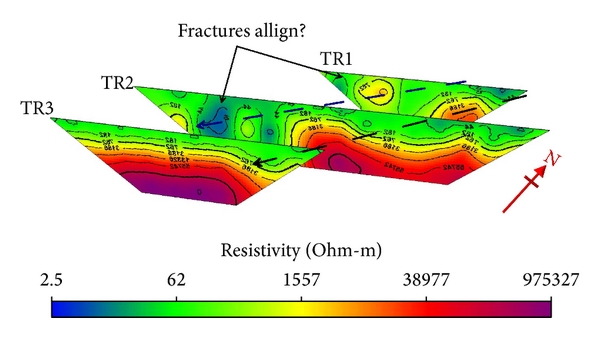
The present paper presents a method that combines finite element method (FEM) and genetic algorithm (GA) to estimate the soil structure in the vicinity of a grounding system. However, the calculation of the theoretical curve in their method merely considers the soil solution domain it is difficult to involve the domain of ground grid.

Gonos and Calixto proposed methods to obtain soil structure based on GA, which can determine the global optimum . In addition, the results of these methods mainly depend on a given initial value, which easily falls into the local optimum . These methods involve derivative calculations and thus require a complex computational process. With regard to the estimation of soil structures, scholars have proposed many linear and quasi-linear numerical calculation methods, such as Gauss–Newton method, steepest descent method and steepest descent method combined with Marquardt method . It is necessary to come up with a method to handle this problem. However, when evaluating an existing grounding system, sometimes the measurement profiles have to be in the vicinity of the ground grid because of the limitation in site conditions and the method proposed by Dawabili and Zhao cannot reveal the real soil resistivity of ground grid area since the measurement profiles are far from the ground grid. To eliminate the influence of ground grid on soil resistivity measurement, Dawabili and Zhao reported that the measurement profile should be located far from the grounding grid with an increase in potential probe spacing ‘ a’ when the measurement is performed in the vicinity of a ground grid and the distance from the profile to the ground grid should be larger than the potential probe spacing ‘ a’ . Several studies have indicated that the presence of buried metallic structures lowers the measured apparent resistivity values when the measurement is performed near such structures . If the position of current probe is fixed, the position of potential probe will change with the change in soil structure. ( D is the maximum distance between two corners of the grid.) The position of the potential probe should depend mainly on the soil structure near the ground grid to allow for a precise measurement . In a case of measuring ground grid impedence with short electrode wire the length of current wires is usually 1 D–2 D. Especially for the soil in the vicinity of a grounding system, it has a significant effect on the performance of the system . Knowledge of the soil structure is essential for the reasonable design of a grounding system and is the precondition for the accurate analysis of a grounding grid that has been built . In addition, the solution accuracy of the soil parameters was reasonably established and thus allowed the algorithm to exhibit convergence within 50 generations. Thus, the proposed method can handle the experimental curve which is influenced by the grounding system. Compared with present methods, the proposed method that combines FEM and GA can adapt to a solution domain of complex geometry shape while ground grid and soil exist simultaneously. The relative position of ground grid and the measurement profiles was considered in FEM, which can reveal the true measurement site. In this study, new soil structures were generated by GA, and finite element method (FEM) was used to compute the theoretical curve of apparent resistivity under these soil structures. GA involves the use of the errors produced by the experimental and theoretical curve of soil apparent resistivity to achieve soil structure optimisation. This study presents a method for the estimation of soil structure based on genetic algorithm (GA), which can reveal actual soil structures through the experimental curve of apparent resistivity that was measured near the ground grid.



 0 kommentar(er)
0 kommentar(er)
